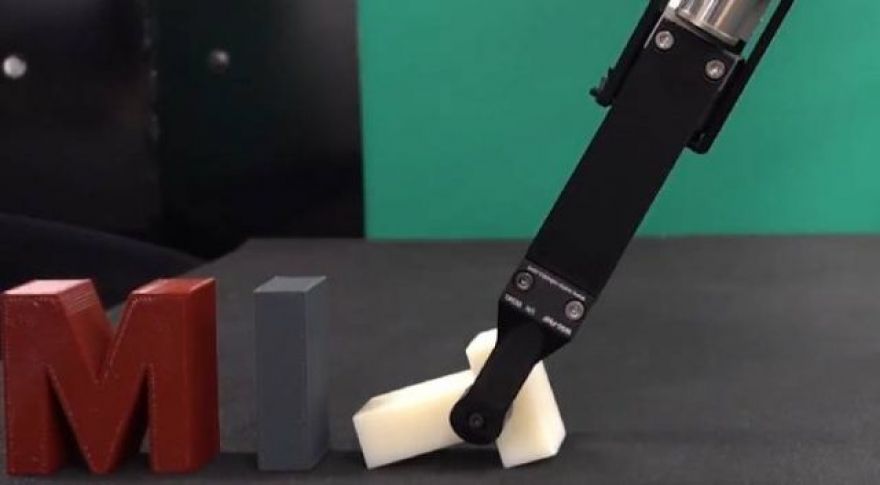
MIT Helps Robots Adjust Grip With New Algorithms
You might not notice how easily you can shift your grip while picking up an object, but robotics engineers think about that a lot. Even the most sophisticated mechanized graspers sometimes can’t grab the right part of an object, and shifting it around is a computationally complex maneuver. Researchers at MIT have that could help robots nudge items into chosen arrangements.
When a person needs to adjust their grip on something without using their other hand, they usually brace it against a flat surface. Think about how you might shift your grip on a pencil when using the eraser — that same process could help a robot pick up and manipulate objects from an unorganized bin with much greater efficiency.
The new algorithms developed by MIT can plan how a gripper might push against or slide along a stationary surface to reposition an object in less than a second. This many-fold increase in efficiency is thanks to a streamlined way of thinking about physics. Previously, a program trying to calculate something like a robotic arm pushing a block against a wall to adjust its grip would need to solve complex math validating the planned maneuver in the context of physical laws like Newton’s laws of motion and Coulomb’s law. Instead, the new algorithm uses cone-shaped maps of friction the team calls “motion cones.”
The values inside of a motion cone describe how a grasper could push or slide an object while satisfying the physical laws and keeping its grip. Everything outside the cone would cause it to drop the object. The team calculates the motion cone for the desired outcome, which gives a subset of possible movements that won’t cause the grasper to drop its cargo. The team notes this is still a complex process for something humans can do automatically, but it’s vastly faster than the old methods. Something that took 500 seconds with older methods only takes one second now.
You can see an example of the new algorithm in action above. The team conducted thousands of tests to validate the motion cone model. If they applied a push that was inside the motion cone, the grasper would remain under control. Anything outside the cone caused the grasper to drop the object. The team hopes this technology will eventually be of use in manufacturing and warehouse settings.
Now read: